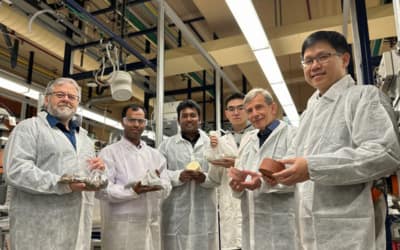This post was originally published on Sustainability Matters

Researchers from UNSW Sydney have examined the untapped solar potential of residential buildings across Australia. Their report found that people living in apartments, social housing and private rental houses are missing out on $9.3 billion per year in possible cost savings.
While Australia may be a world leader in residential photovoltaic deployment, with rooftop solar installed in almost one in three houses, most of those houses are owner–occupier dwellings — leaving rentals out of the equation.
The report, ‘Rooftop Solar Potential of Australian Housing Stock by Tenure and Dwelling Type’ was commissioned by Solar Citizens and conducted by researchers from UNSW School of Photovoltaic and Renewable Energy Engineering in collaboration with the Australian Photovoltaic Institute. It found total potential for rooftop solar installation is estimated at approximately 61 gigawatts (GW), which could reduce greenhouse gas emissions by 785 megatonnes over the next 20 years.
The research involved an analysis of all residential buildings in Australia in order to estimate how many extra solar panels could be installed on those sites. As of June last year, approximately 15.1 GW of residential solar is installed in Australia.
The report found there is approximately 45.8 GW of unrealised potential solar energy on houses and apartments across the country — three times the number of panels currently installed on roofs. New South Wales, Victoria and Queensland were found to have the highest share of this solar potential across the country.
“Our analysis found the power of solar can deliver average annual household bill savings of $1300 each year,” said Dr Mike Roberts, UNSW Senior Research Fellow and one of the authors on the report.
“Apartments are another housing type where government investment now will pay high dividends in cheaper bills and less emissions for long into the future,” he said.
Apartment buildings are missing out on three gigawatts of solar power, Roberts said. Social housing and the rental sector — which include both houses and apartments — are missing out on more than two gigawatts and 12 GW respectively.
Roberts said apartment residents could be saving an average of $500 to $700 a year on their energy bills and could be paying off the system in five years or less.
“While we have seen recent action on solar for social housing through collaboration between several state and federal governments, this approach should be fast-tracked to a greater number of social homes, given the outstanding cost savings on bills and other benefits delivered,” he said.
The report makes it clear, Roberts said, that certain sectors, such as social housing and rental properties, need targeted incentives to encourage more landlords to consider adopting rooftop solar.
“For rental properties, a big part of the problem is because the cost of installing solar is absorbed by landlords but the benefits go to the tenants,” he said.
“To address this, this report recommends giving tenants increased visibility of the financial benefits of solar which could be reflected in their rental rates — allowing landlords to recoup their investment costs.
“Targeted subsidies, such as Solar Victoria’s Solar Rebates for Rental Scheme, could also incentivise landlords to invest in solar, as could rule changes to allow the associated capital costs to be offset through instant tax write-offs.”
The report also found that closing the solar potential gap would create 240,000 additional job-years of employment in the solar industry, supporting those working in solar sales and installation roles — the equivalent of employing 48,000 people for five years.
“Unlocking this solar potential can return money to people’s pockets, deliver 785 megatonnes in avoided carbon emissions over 20 years and the up-front investment is repaid in bill savings for households within about five years,” said Joel Pringle, National Campaigns Director at Solar Citizens.
“Cleaner, cheaper rooftop solar energy is a win for both energy bill relief and reducing climate pollution. One in three Australian homes has now gone solar; we need greater government support to ensure the financial and health benefits are extended to all Australian households.”
Image credit: iStock.com/Photon-Photos





0 Comments